Today’s article is about prioritizing! We take a look at how our QA team managed to tackle each task at hand by employing the most efficient prioritizing techniques for software testing.
It was a hot summer day, and the team at BetterQA was feeling the pressure. They were in the final stretch of a big project, and the deadline was looming. With so much to test and so little time, they knew they needed to be strategic about how they prioritized their testing efforts.
Which items should the QA team prioritize first?
A lively debate broke out as the team gathered around the conference table to discuss their options. Some argued for a risk-based approach, where they would focus on testing the areas of the system with the highest potential for failure. Others advocated for a business impact analysis, where they would prioritize testing based on how much damage a failure in each area could do to the company’s bottom line.
Ultimately, the team decided to use various techniques, including risk-based testing, business impact analysis, and user story mapping. They knew each approach had its strengths and weaknesses, but by combining them, they hoped to get the best of all worlds.
Prioritizing software testing: step by step
The first step was to conduct a risk assessment. Our QA team identified the most critical functions of the system and ranked them based on the likelihood and severity of failure. This gave them a good starting point for their testing efforts, as they could focus on the areas that posed the greatest risk to the project.
Next, the QA team conducted a business impact analysis. They worked with stakeholders to identify the areas of the system that were most critical to the company’s success and ranked them based on how much damage a failure in each area could do. This process helped them to prioritize testing efforts based on the potential impact on the company, which was especially important for areas that might not have been high-risk from a technical perspective but were still critical to the business.
Finally, they used user story mapping to better understand how the system was being used in practice. They worked with end-users to map out the user journey and identify the most critical user stories. This helped our QA team to prioritize testing efforts based on the areas of the system that were most important to users, which was essential for ensuring that the system was meeting the needs of its intended audience.
By combining these techniques, the team was able to prioritize their testing efforts effectively. They were able to focus on the areas of the system that posed the greatest risk, had the greatest potential impact on the company, and were most important to users. This helped them to catch critical issues early on and ensure that the system was meeting the needs of its users and stakeholders.
Keeping an eye on what's next
Of course, there were still challenges along the way that needed to be addressed. Prioritization is never an exact science, and there were times when the team had to adjust their priorities based on new information or unexpected issues that arose. But by using a combination of techniques and staying focused on their goals, the QA team navigated these challenges and delivered a high-quality product on time.
In the end, the team learned that effective prioritization is key to successful software testing. By taking the time to understand the risks, impacts, and user needs to be associated with a system, they were able to focus their testing efforts where they mattered most. And that, in turn, helped them to deliver a better product to their users and stakeholders.
Stay Updated with the Latest in QA
The world of software testing and quality assurance is ever-evolving. To stay abreast of the latest methodologies, tools, and best practices, bookmark our blog. We’re committed to providing in-depth insights, expert opinions, and trend analysis that can help you refine your software quality processes.
Delve deeper into a range of specialized services we offer, tailored to meet the diverse needs of modern businesses. As well, hear what our clients have to say about us on Clutch!

